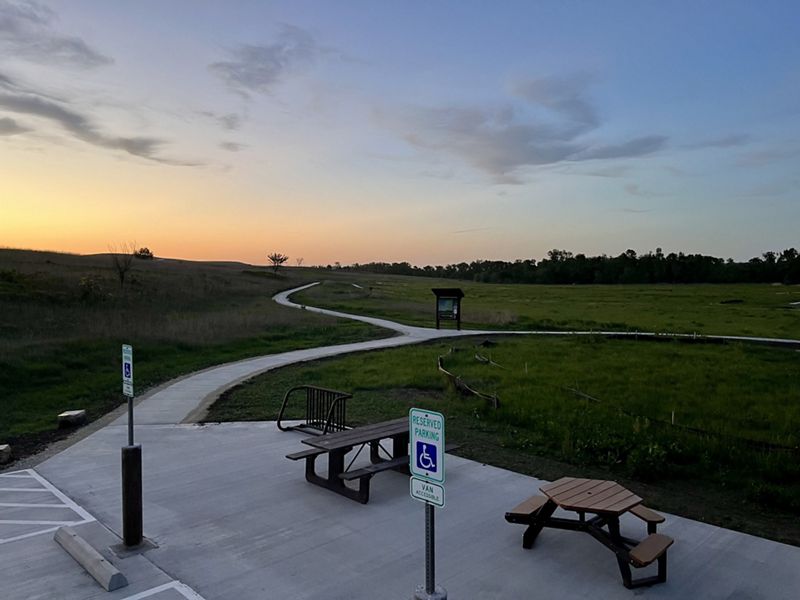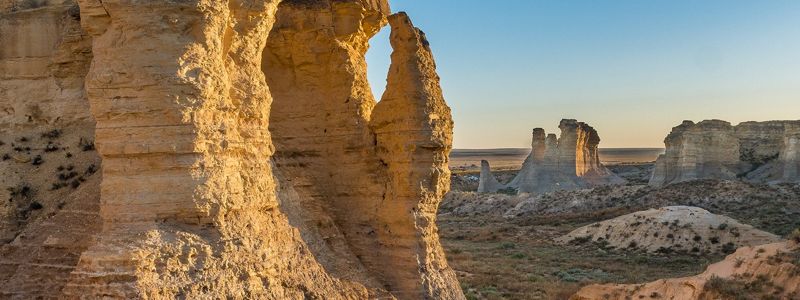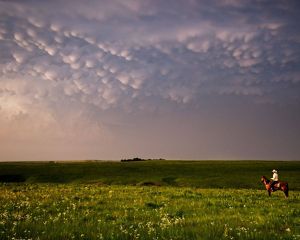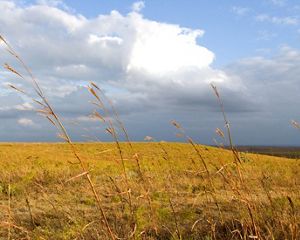
Following a recent closure for accessibility upgrades, The Bottomland Trail at Tallgrass Prairie National Preserve is officially open! Both loops are now paved and fully ADA accessible, providing a smooth and seamless opportunity for more Kansans to get outside and enjoy this incredible landscape.
Sitting inside one of the preserve’s restoration fields, the Bottomland trail area was restored from agricultural use around 20 years ago. Flat terrain and two varying-length trails of 3/4 and 1/2 miles made Bottomland the perfect area for upgrades and an accessible, level path. The improvements, made possible by the National Park Service, also include rock and grass buffers to the trail, ensuring maximum clearness and space for people of all ages and abilities.
While exploring the trail, visitors can expect to see an ecosystem that differs in size and composition from its surrounding tallgrass prairie and woods. This lowland area is the fertile home to numerous species of plants and animals, including birds, turtles, white tail deer and rabbits. Trees and grass provide habitat for wildlife, while nearby Fox Creek holds a variety of fish and invertebrates. During the summer and early fall months, a flowery expanse awaits, as grasses and wildflowers attain their maximum growth in the bottomland, reaching seven to eight feet high.
Locals and travelers alike have already been enjoying the updates and accessibility of the Bottomland Nature Trail, and we invite you to experience the biodiverse beauty of the Flint Hills for yourself this summer. All hiking trails and outdoor areas are open 24 hours. Pets are allowed only on the Bottomland Nature and Fox Creek Trails, the Southwind Nature Trail and the Two Section Trail when cattle are not grazing. Camping is not permitted.
Sign Up for Nature News
Sign up to receive monthly conservation news and updates from Kansas. Get a preview of Kansas' Nature News email.

Restoring the Bottomland Prairie
Much of the original bottomland plant community has disappeared over the last 120 years. Crops like corn, wheat, and smooth brome took advantage of the rich, deep soil, while stockyards, rail spurs, and ranch roads made good use of the flat terrain. These changes in the ecosystem allowed non-native and invasive plants to increase. Tallgrass Prairie National Preserve works to restore this bottomland area to its original state through activities such as invasive plant removal, prescribed burning and reseeding projects.
Support Our Lands, Waters & Wildlife
You can feel confident that your donation in support of nature will make a difference by putting you at the center of critical conservation projects underway here in Kansas and around the world.


